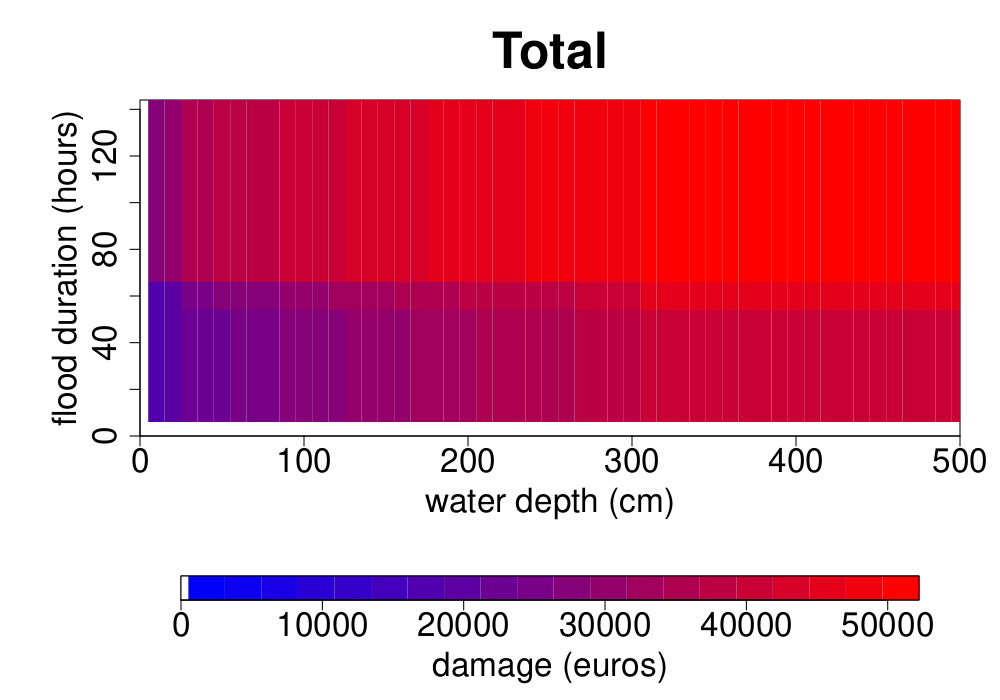
Outputs at building level
At the level of a building model, floodam.building produces four types of outputs:
- an inventory of the elementary components that make up the building
- summary statistics of the characteristics of the building model
- absolute damage functions
- relative damage functions
In this section, these types of outputs are successively described.
Inventory of elementary components
floodam.building produces tables that list and give the characteristics of the elementary components that make up:
- the walls: for each wall:
- the characteristics given as inputs are reminded
- additional characteristics that are computed by
floodam.buildingfrom the input data are given: the wall length and surface
- the openings: for each opening:
- the characteristics given as inputs are reminded;
- additional characteristics that are computed by
floodam.buildingfrom the input data are given: the opening surface and its elevation relative to the ground;
- the contents: for each element of the contents:
- the characteristics given as inputs are reminded;
- the value of the characteristic is given. It is computed by
floodam.building. It is the mean between the maximum and minimum replacement value, multiplied by the dilapidation. It is used to estimate the damage if the element is destroyed;
- the wall coatings: for each wall coating:
- the characteristics given as inputs are reminded;
- additional characteristics that are computed by
floodam.buildingfrom the input data are given: its elevation relative to the ground, its height, its width, its surface.
Summary of the building modelled
floodam.building produces some characteristics that summarize the building modelled:
- area:
floodam.buildingcomputes different types of areas:- the total internal area of the building (considered as the sum of the areas of all internal rooms);
- the internal floor area of the building (considered as the maximum of all internal areas calculated at storey level);
- the external floor area of the building (considered as the maximum of all external areas calculated at storey level; external walls are used to compute external areas);
- value:
floodam.buildingcomputes the total value of the contents. This value may be categorized according to the type of contents items. For instance when a building is a dwelling, all the items that make up the contents are considered as furniture. When a building is an activity, the items that make up the contents are classified into equipment and stock categories.
Absolute damage function
floodam.building produces absolute damage functions that pertain to:
- the whole building
- the built part of the building
- the furniture contained in the building, if the building contains a dwelling
- the equipment contained in the building, if the building contains an economic activity
- the stocks contained in the building, if the building contains an economic activity
Absolute damage functions indicate, for the defined combinations of water depth and flood duration, the total damage to the considered part of the building or to the whole building.
Figure Figure 1 shows the total absolute damage function of the dwelling represented in the building model section.

Relative damage function
floodam.building produces relative damage functions by dividing the absolute damage functions by some statistics at the building level. For instance, floodam.building produces:
- relative damage functions related to the built part of the building by dividing the corresponding absolute damage function by the internal floor area of the building;
- for dwellings, relative damage functions related to the furniture by dividing the corresponding absolute damage function by the total value of the furniture;
- for activities, relative damage functions to the equipment by dividing the corresponding absolute damage function by the total value of equipment;
- for activities, relative damage functions to the stocks by dividing the corresponding absolute damage function by the total value of the stocks;